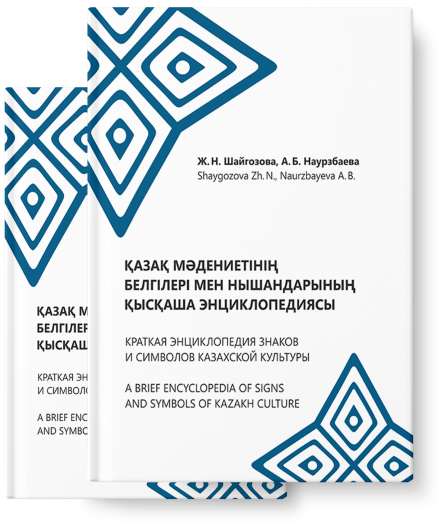
A short encyclopedia of
Signs and symbols of
Kazakh culture

The “tūmarsha” is one of the popular motifs associated with the magic of protection from evil forces and the evil eye. In the Kazakh region, the first evidence of its use as a talisman is found on the pottery of the Andronovo culture. Its name is derived from the term “tūmar” (usually triangular), which in Turkic culture was a powerful protection against evil and evil forces. In its natural form and function, it is still in use today.
It is believed that the upward triangle symbolises the rise of spirit from matter (world mountain – connection of the three worlds) and the downward point symbolises the descent of spirit into matter. Sometimes the triangle with the apex pointing upward represents the masculine and with the apex pointing downward represents the feminine.
The triangle is considered a divine sign, the embodiment of upward striving and a symbol of life. The meaning of the triangle is close to the world mountain, which unites all three worlds – the heavenly, the earthly and the subterranean. Popular in world culture: three intertwined triangles symbolise the ancient Scandinavian god Odin, the famous Star of David is formed by two equilateral triangles, and so on.
The pattern is used in almost all types of applied art of Kazakhs due to its simplicity and brevity.

